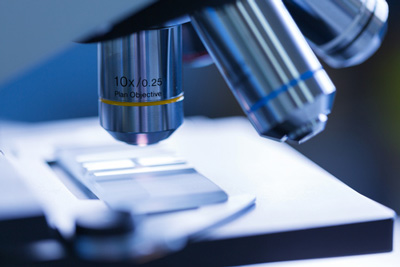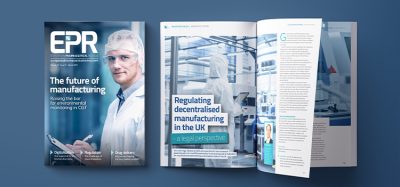Emerging trends in microbiological diagnostics: an introduction to rapid microbiological methods
Posted: 29 January 2016 | | No comments yet
This article explores how scientists are developing a fast, qualitative and specific technique for the detection and classification of microorganisms…


Just like any other scientific study, the continuous study of microbiology has been coincidental with the emergence of new ideas, methods and technologies.


As a scientific discipline which studies organisms unseen by the human eye, microbiology has also developed in line with advancements in microscope technology, from Leeuwenhoek’s crude microscope, to electron and later to laser microscopes. In addition, clinical tests and diagnostic methods have evolved from the simple and general basic staining to complex but specific molecular techniques, which include typing, polymerase chain reaction (PCR), biochemical tests and immunologic tests1. A general characteristic of these methods is that they are multi-step processes and time-consuming. However, detection of a particular microorganism in emergency cases should be rapid. This article explores how scientists worldwide are, independently of each other, developing a standard, fast, qualitative and specific technique for the identification, detection, determination and classification of microorganisms. Various methods have merged together in a single scientific system (with diverse technologies) to give birth to rapid microbiological methods (RMMs).
Nature of rapid microbiological methods
As the name implies, RMMs refer to a few specific stepped techniques used in the determination, detection and identification of microorganisms. As Prescott rightly put: “Clinical microbiology has benefited greatly from technological advances in equipment, computer programs and data bases, molecular biology, and immunochemistry. With respect to the detection of microorganisms in specimens, there has been a shift from the multistep methods previously discussed to unitary procedures and systems that incorporate standardisation, speed, reproducibility, miniaturisation, mechanisation, and automation.”1
Even though they vary technologically for individual organisms or groups of organisms, RMMs have become a fast-growing and indispensable tool for clinical and laboratory diagnostics in microbiology. Characteristically, they are a set of qualitative and quantitative diagnostic techniques for the detection of all forms of microbial life (including endospore and viral coats), in a particular working laboratory sample. They have an exceptional sensitivity of about 75% during routine quality control (QC)2 and they vary in forms and functions depending on the varied use of computers, kits, etc. The unifying attributes of RMMs is that detection of microorganisms is dependent on technology used3.
Classifications of rapid microbiological methods
RMMs can be classified based on their various forms and functions.
Classification based on forms: this simply refers to the medium through which procedural steps are carried out in the detection of a microorganism, species or Genera of a microorganism. These procedural steps are normally short and rapid in detecting microbial life forms. They may also be classified into; (i) Manual biochemical/chemical (kit) systems and (ii) Mechanised/automated systems.1
i. Manual biochemical/chemical (kit) system: this system is a scientifically organised set of biochemicals that can be used to detect a microorganism or a group or Genera of microorganisms. It contains a set of pre-chronologically arranged biochemicals that are employed in clinical diagnostics. They are a bit slow, but nonetheless, faster than conventional methods. Examples include the Enzyme-Linked Immunosorbent Assay (ELISA), API Rapid 20E. The contents of these kits are incubated alongside microbial cultures and changes can be described based on presence or absence of microbes (i.e., either positive or negative). The API Rapid 20E kit, for instance, rapidly detects members of the bacterial Genera Enterobacteriaceae.
| RMM | Time to Result | Microorganism/Group of Microorganism |
| API Rapid 20E | 4 Hours | Enterobacteriaceae |
| API 20E | 18-24 Hours | Enterobacteriaceae |
| API 20NE | 24-48 Hours | Non-Enterobacteriaceae |
| API NH | 2 Hours | Neisseria Haemophilus4 |
The ELISA kit is a typical viral kit that works on colour changes as a result of specific enzyme-antigen/antibody linked reaction. This enzyme-antigen/antibody complex is in the form of an assay. It specifically detects RNA viruses such as Human Immunodeficiency Virus (HIV) and West Nile Virus.
ii. Mechanised/Automated RMMs: this is a technology-based method of microbial detection and identification, whereby technologically-driven machines, cartridge systems and computers detect microorganisms. These technologies are based on specific distinguishing factors, which include: growth-based characteristics; viability characteristics; cellular-component characteristics; optical spectroscopy; nucleic acid amplification; and micro-electrical-mechanical systems (MEMS)5. Bulks of currently-used RMMs are mechanised because they are automated and have minimal multi-procedural-steps.
Classification based on functions: this simply refers to the practical essence/purpose of a particular RMM. Such functions may range from detection of identification and detection of presence/absence to enumeration of microbial life on a working laboratory sample etc. They may also be further classified into (i) Microbial Identification RMMs (ii) Qualitative RMMs and (iii) Quantitative RMMs.
i. Microbial Identification RMMs: identification of microorganisms, which is the principal role of the clinical microbiologist, has not been made rapid over the years. Major disease causing organisms have been tracked down to the subspecies level by Microbial Identification RMMs. Subspecies of E. coli such as ExPEC, EHEC, EIEC, EPEC, VTEC etc. and even the ubiquitous, Mycobacterium tuberculosis strains such as those causing multi-drug-resistant tuberculosis (MDR-TB), have been detected by loop-mediated isothermal amplification (LAMP) coupled with PCR6 and MicroSEQ (produced by Applied Biosystems)5, respectively. Major Microbial Identification RMMs work by extraction and sequencing of an organism’s genome. These rapid methods are basically comparative, since the end results are compared with existing databases. Microbial Identification RMMs are also essential in detection and classification of known and unknown microorganisms. For example, GeneXpert, a cartridge-based automated diagnostic test, can detect and estimate TB and the degree of virulence of potential strains.
ii. Qualitative RMMs: these are RMMs that rapidly detect the presence or absence of a particular microbe, i.e., they qualitatively detect disease-causing organisms even to subspecies level. Due to this rapid function, qualitative RMMs should be first used in analysing and diagnosing samples from emergency cases and as a result, treatments will be faster. Furthermore, syndromic effects such as septicaemia or septic shock that are caused by many organisms and are common in emergency cases7 could be diagnosed easily,rapidly and qualitatively by a variety of qualitative RMMs.
iii. Quantitative RMMs: these comprise another functional class of RMMs. Just as the name implies, they quantify or practically count (enumerate) microbial life forms present on a test sample. They couple technology (high magnification imaging, spectroscopy, fluorescence microscopy, etc) with practical counting methods (principally flow cytometry, viability staining. etc) which are both automated and rapid. Medically, they can be used to determine the invasiveness rate of microorganism per are of infected tissue.
All three functional forms of RMMs actually work hand in hand. Microbial Identification RMMs can detect and ascertain microbes associated with a laboratory sample or disease case, while qualitative RMMs will detect the presence or absence of a particular target microorganism out of different species in a sample due to clues given by specific symptoms. A quantitative RMM can then be used to quantify and estimate microorganisms per tissue, equipment or samples (invasiveness).
Applications of RMMs
In summary, the usefulness of RMMs in microbiological diagnostics cannot be overemphasised. This is due to their accuracy, sensitivity, acumen, reliability and speed. Just as Miller has stated: “Many rapid microbiological method technologies provide more sensitive, accurate, precise, and reproducible test results when compared with conventional, growth-based methods.”3
RMMs have a vast range of applications in both medical and pharmaceutical laboratories, and have made it easier to conduct quality assurance (QA) and QC. A QC laboratory analyst will reduce the risk of contamination by examining tools and specimens with qualitative RMMs, while clinical microbiologists are able to detect the presence of microorganisms even during the incubation, window or latent periods.
A statistic once graded RMMs use to be ≥75% during routine QC. They are also useful to the clinical microbiologist during emergency cases, enabling for rapid identification of microorganisms. Pharmaceutically, RMMs are also useful in measuring drug safety and can even help measure environmental bioburden. Meanwhile, for molecular biologists, RMMs coupled with PCR are useful in studying organism genetics in relation to their mechanism of disease causing ability.
References
- Prescott L. M. Microbiology. 2002; 5th ed USA: McGraw-Hills Companies
- Rapid Microbiology RMM-ad on www.rapidmicrobiology.com, retrieved on 25th September, 2014
- Miller J. M. The implementation of Rapid Microbiological Methods. European Pharmaceutical Review. 2010.
- Table content extracted from www.biomerieux-usa.com
- Miller J. M. Rapid microbiological methods and the regulatory environment. European Pharmaceutical Review. 2014.
- Joshua H. et al. Journal of Clinical Microbiology. 2008, 46(8): 2800-2804
- Parillo J. E. Pathogenic Mechanisms of septic shock. N. England Journal of Medicine 1993; 328, 1471-1477 in Mark. M.D and Bill M.D. (nd) Clinical Microbiology Made Ridiculously Simple
- Lansing M. P. Microbiology. 2003, 5th ed USA: Mc-Graw Hills International.
- Rapid Micromethods. (2014). The RMM Product Matrix, retrieved from www.rapidmicromethods.com on 25th September 2014
- Rapid Micromethods. (2014). The RMM Tutorial, retrieved from www.rapidmicromethods.com on 25th September 2014







